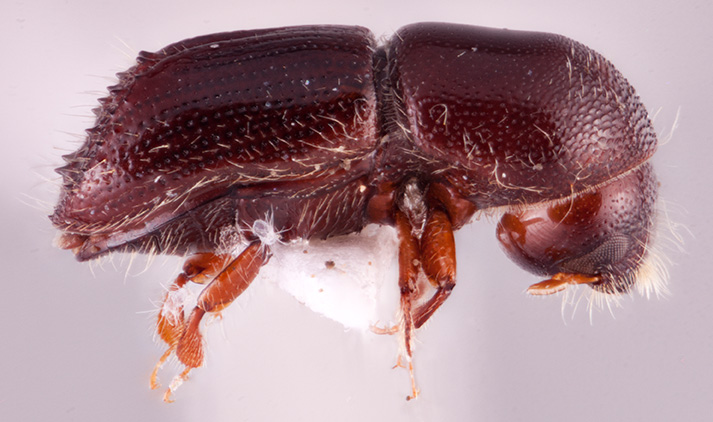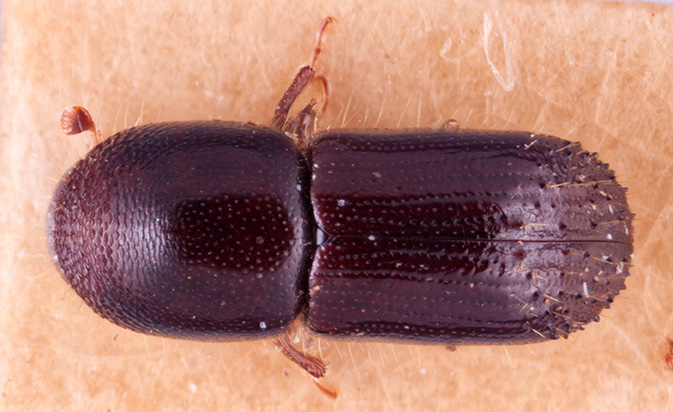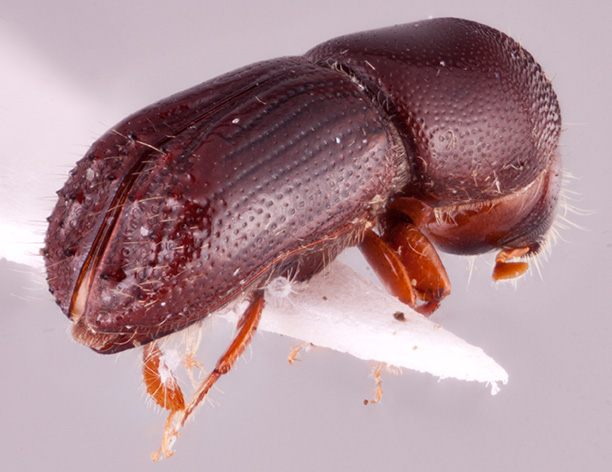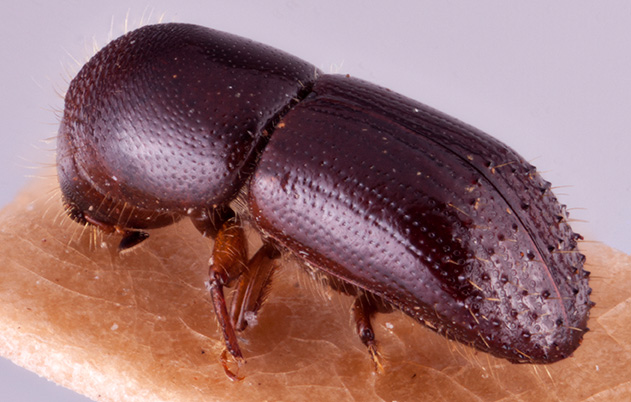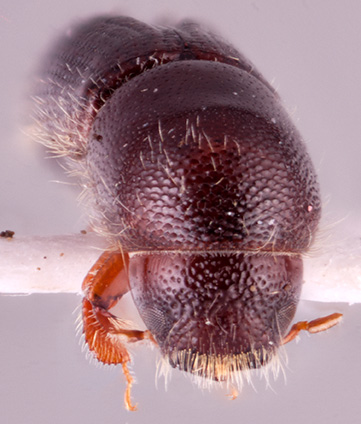Stictodex dimidiatus
|
Stictodex dimidiatus lateral; R.K. Osborn |
|
Stictodex dimidiatus dorsal; R.K. Osborn |
|
Stictodex dimidiatus dorsal; R.K. Osborn |
|
Stictodex dimidiatus declivity; R.K. Osborn |
|
Stictodex dimidiatus declivity; R.K. Osborn |
|
Stictodex dimidiatus frontal; R.K. Osborn |
Taxonomic history
Xyleborus dimidiatus Eggers, 1927a: 404.
Stictodex dimidiatus (Eggers): Hulcr and Cognato, 2013: 125.
Synonyms
Xyleborus dorsosulcatus Beeson, 1930: 219. Smith et al. 2020b: 310.
Xyleborus tunggali Schedl, 1936d: 32. Hulcr and Cognato, 2013: 125.
Xyleborus decumans Schedl, 1953b: 301. Hulcr and Cognato, 2013: 125.
Xyleborus cruciatus Schedl, 1973: 90. Hulcr and Cognato, 2013: 125.
Xyleborus spicatus Browne, 1986: 95. Smith et al. 2022b: 166.
Diagnosis
2.4−3.3 mm long (mean = 2.96 mm; n = 5); 2.54−2.89 times as long as wide. Stictodex dimidiatus can be readily distinguished by the antennalantennal:
pertaining to the antennae
club very broad, type 2 (obliquely truncatetruncate:
appearing cut off or suddenly shortened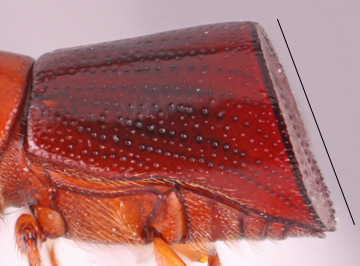 ), with segment 1 straight; elytralelytral:
), with segment 1 straight; elytralelytral:
pertaining to the elytra
declivitydeclivity:
downward slope of either the pronotum or elytra
 with first and second interstriaeinterstria:
with first and second interstriaeinterstria:
longitudinal spaces along the elytra between the striae, which is not as<br />
impressed and bear smaller punctures.
 divergent, broadest at elytralelytral:
divergent, broadest at elytralelytral:
pertaining to the elytra
summit; declivitydeclivity:
downward slope of either the pronotum or elytra
 flat and gradually sloped; scutellumscutellum:
flat and gradually sloped; scutellumscutellum:
a shield-like sclerotized plate located at the midpoint of the elytral base
flat, flush with elytra; pronotumpronotum:
the dorsal surface of the thorax
tight around head; protibiaeprotibia:
tibia of the first pair of legs
inflatedinflated:
blown up; distended
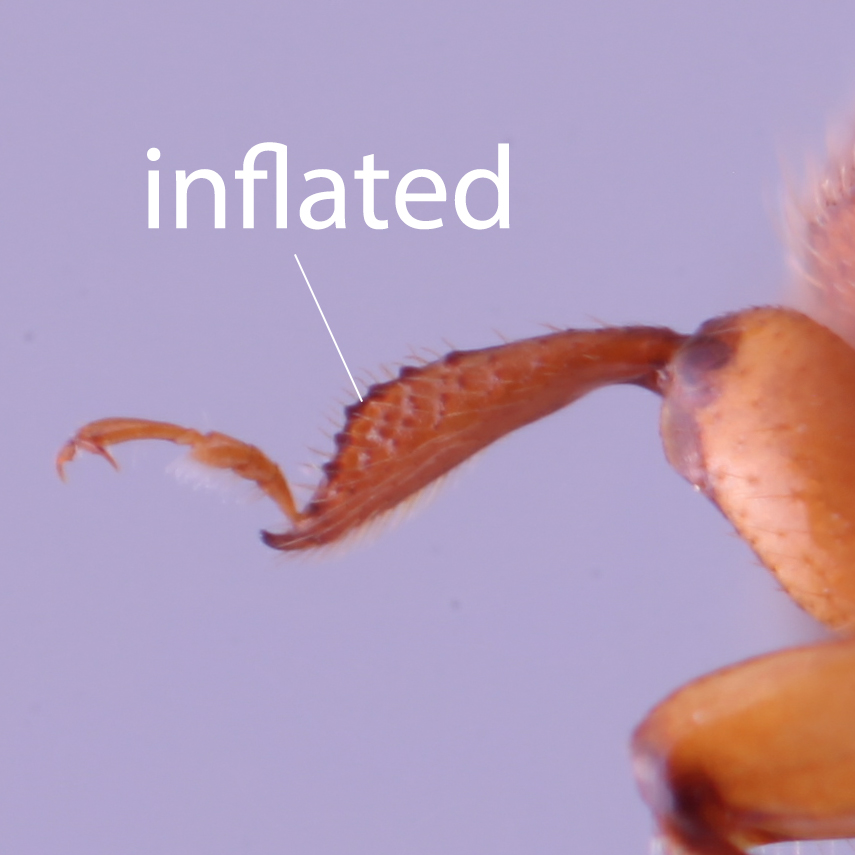 on posteriorposterior:
on posteriorposterior:
toward the rear end; opposite of anterior
 face.
face.
Specimens of this species demonstrate an extreme morphological continuum of variation in the elytralelytral:
pertaining to the elytra
striae (both on discdisc:
the flat central upper surface of any body part (e.g. pronotum and elytra) and declivitydeclivity:
and declivitydeclivity:
downward slope of either the pronotum or elytra
 ) with it ranging from slightly to deeply impressedimpressed:
) with it ranging from slightly to deeply impressedimpressed:
a depression in a surface
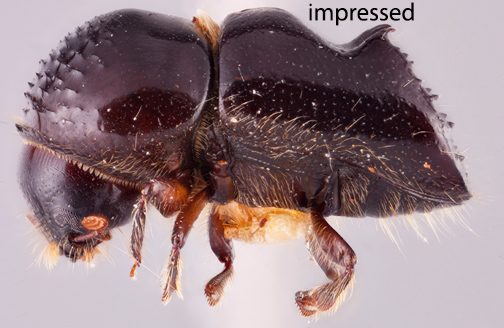 .
.
May be confused with
Arixyleborus species which share a broad antennalantennal:
pertaining to the antennae
club but possesses distinctive elytralelytral:
pertaining to the elytra
ridges and furrows.
Distribution
China (Yunnan), Indonesia (Maluku), Laos, East and West Malaysia, Myanmar, New Guinea, Sri Lanka, Thailand, Vietnam
Host plants
Most host records are from the Dipterocarpaceae, but other tree families are also occasionally attacked (Browne 1961b as Xyleborus decumans and X. tunggali).
Remarks
This species is remarkably morphologically variable. Further study using molecular data will be required to assess species limits.
DNA data
Sequences available for COI and CAD:

